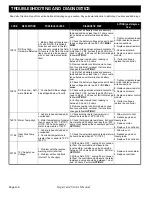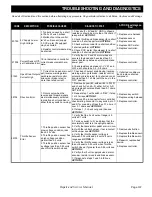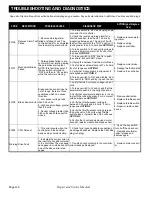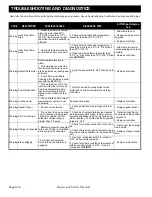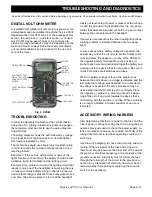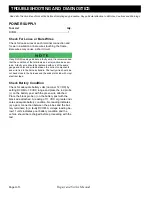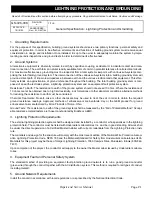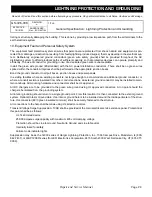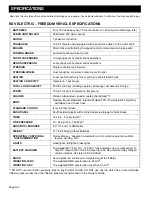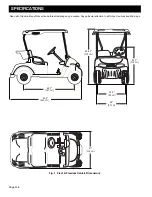
TROUBLESHOOTING AND DIAGNOSTICS
Page O-12
Repair and Service Manual
Read all of Section B and this section before attempting any procedure. Pay particular attention to all Notes, Cautions and Warnings.
B
B
DIGITAL VOLT OHM METER
A typical DVOM (digital volt ohm meter) is shown. A rec-
ommended model is available through the Service Parts
Department as P/N 27481-G01. For the purpose of this
section, the red probe (+) and black probe (-) are used.
Any DVOM may be used, however the controls, dis-
plays, accuracy and features may vary depending on the
make and model. Always follow the meter manufactur-
er’s recommendations and instruction for the use and
care of the meter.
Fig. 2 DVOM
TROUBLESHOOTING
In order to effectively troubleshoot the circuits that in-
clude the horn, lighting, brake/turn signals and gauges,
the technician must be able to use the wiring diagram
and a DVOM.
The wiring diagram shows the path followed by voltage
or a signal from its origination point to its destination.
Each wire is indicated by color.
The technician should use simple logic troubleshooting
in order to reduce the number of steps required to iso-
late the problem.
Example 1: If the vehicle will not start or none of the
lights function (or burn dimly) the battery should be test-
ed before trying to troubleshoot the lighting circuit.
Example 2: If a problem occurs in the lighting circuit that
results in only one of the headlights not working, there is
no reason to check battery wiring or the fuse since it is
obvious that voltage is present. Since bulbs will burn out
over time, the obvious place to start is at the headlight
that is not functioning. if power is present at the connec-
tor and the ground wiring is satisfactory, the only possi-
bilities that exist are a burned out bulb or a poor contact
between the connectors and the headlight.
If power is not present but the other headlight functions,
a wiring problem is indicated between the two head-
lights.
In some cases where battery voltage is expected, the
easiest way to test the circuit is to set the DVOM to DC
volts and place the negative (-) probe of the DVOM to
the negative battery terminal. Move the positive (+)
probe to each wire termination starting at the battery and
working out to the device that is not working. Be sure to
check both sides of all switches and fuses.
When no battery voltage is found, the problem lies
between the point where no voltage is detected and the
last place that voltage, was detected. In circuits where
no voltage is expected, the same procedure may be
used except that the DVOM is set to continuity. Place
the negative (-) probe on a wire terminal at the begin-
ning of the circuit and work towards the device that is
not working with the positive (+) probe. When continuity
is no longer indicated, a failed conductor or device is
indicated.
ACCESSORY WIRING HARNESS
After determining that there is power to the fuse and the
fuse is good, continue checking the circuit using the pro-
cedures previously used to check the power supply, i.e.
loose or rusted connections, bare wires, continuity of the
wiring from terminal to terminal, operating condition of
switch, etc.
Use the wiring diagram to check correct wiring and wire
routing. If there is power at the fuse end of the wire,
there must also be power at the other end of the wire at
the switch or electrical accessory, and eventually at the
ground connection. Electricity must flow from the fuse
through the full length of the circuit to the ground con-
nection. Any interruption of electricity flow must be cor-
rected, whether by repairing or replacing the wire, the
switch or the accessory.
COVER
DATA-H
SWITCH
RANGE
SWITCH
TRANSISTOR
SOCKET
+ TEST LEAD
- TEST LEAD
TEST RECEPTACLES
FUNCTION SELECTOR
SWITCH
CONTINUITY TEST
DIODE TEST, AC/DC
CURRENT TOGGLE
SWITCH
DIGITAL DISPLAY









